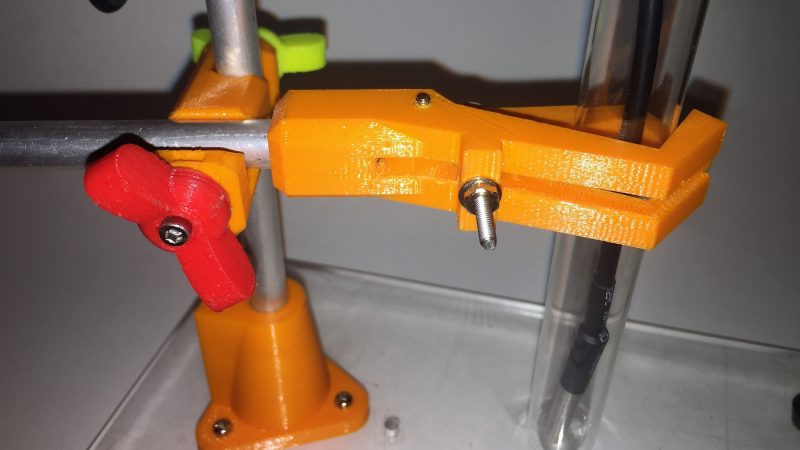Fixturing and work holding can be huge problems for hackers. Let’s face it – that $5, alligator clip-festooned “Helping Hand” is good for only the smallest of workpieces, and the problem only gets worse as the size scales up. One can jury rig fixtures for things like microscopes and lights, but a systematic approach like this 3D-Printed work fixturing Erector Set really appeals to our need for organization.
As [Tinkers Projects] explains it, the genesis of this project came from a need to mount a microscope firmly over a PCB. Rather than build a one-off fixture, the idea of a complete system of clamps and connectors seemed to make more sense. Based on 10-mm aluminum rods and a bewildering number of 3D-printed pieces, the set has just about everything needed to fixture pretty much anything. There’s a vertical element that acts as the central support, connectors for putting another rod perpendicular to that, plus neat attachments like a three-fingered clamp for small cylindrical objects and a couple of blocks that act like a stick-vise for PCBs and similar workpieces. And yes, there’s even a fixture with alligator clips. The whole thing seems very well thought out and has a little mad scientist vibe to it, but while some fixtures look as if they came right from the chemistry lab, we’d be cautious about chemical compatibility and use near heat sources.
[Elliot Williams] did a rundown of what people are using for helping hands a couple of years ago which made us covet articulating dial indicator arms for our bench. Still, [Tinkers Projects]’ approach has a lot of appeal and is probably cheaper and more versatile to boot.
















3D printing something that could be made very quickly with a couple pieces of scrap steel. Way to go.
I have fabricated a lot of things out of scrap steel.
I also have a 3D-printer.
So I would say I’m fairly proficient at both, I also recognize the strengths and weaknesses of the processes involved.
That being said, who in their right mind would chose the angle grinder and welder over a 3D-printer when it comes to making an adjustable clamp for holding glassware?
Seriously?
Glassware might become too hot to be securely held by a 3D printed part.
Option 1 – Source raw material, measure carefully, handle each machining operation manually, spend hours in the shop.
Option 2 – Download STLs, send them to printer, walk away and do something else while they print.
Not saying either option is superior – I can see the value in exercising machining skills and in freeing up the time to do something else. But it’s nice to have choices here in the 21st century, isn’t it?
Negativity at it’s finest. I applaud your ability to read about a good hack and then tear it down because another method could have been used. Go you!
Tell me if I’m wrong but isn’t glassware one of the most observed temperature controlled processes? Combined with 3d printing glassware can be paired with stronger structures and use materials that are soft enough to function with glass but still heat resistant enough to not warp when working with hot glass.